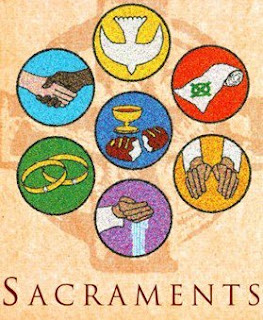The Marthoma Church was created 2000 years ago in the Indian province that would later be known as Kerala. The Church’s proximity to Hinduism and relative isolation from other Christian denominations in its infancy played a major role in shaping its beliefs. The later influence of both Catholics and Protestants helped shape the symbols and even the logo of the Marthoma Church. The worship of the church and its sacraments also have a traceable lineage.
To learn about the history of the Marthoma Church, click here.
Worship
To learn about the history of the Marthoma Church, click here.
Worship
The Marthoma Church uses the St. James Liturgy in its weekly worship because it helps the worshipper become spiritual and it reminds us of the message of salvation. One major feature is the Nicene Creed, which defines the beliefs of the Christian faith and explains how Christians are able to worship a God that is also 3 beings. It was created in 325 AD in Nicea and it is currently in use by the Roman Catholic Church, the Anglican Church, and various Protestant Denominations.
When the service starts, the curtain, illustrating the separation of heaven and earth, is moved, exposing the madbaha(altar). It faces the east because when Christ returns, he will come from the east and move to the west. Incense is used to symbolize the presence of God and it was used to represent respect.
 |
Sacraments
The word sacrament comes from the Latin word, sacromentum, which means sacred. The church believes in 7 sacraments, which are the following:
- Mamodisa (Baptism): The church encourages child baptism and during the baptism, the parents take an oath stating that they will raise the child to follow Christ.
- Confirmation: Confirmation takes place when the child becomes 12. This is when the child declares that he/she will follow Christ in from of the congregation. This sacrament complements baptism because it shows the community that the parents fulfilled their oath and the child can now participate in the Holy Qurbana.
- Confession: Confession is the acknowledgement of one’s sins and asking for forgiveness from God. Unlike Catholics, marthomites believe that confession is between you and God, there is no priest involved.
- Holy Qurbana (Holy Communion): Qurbana is East Syriac for sacrifice, and it is typically referencing to the last supper. While the Catholic church believes in transubstantiation and Lutherans believe in consubstantiation, the Marthoma church believes that partaking in the Holy Qurbana is that God’s grace is given to the individual. This cannot be verbalized and is used to define one’s experience during communion.
- Marriage: In Indian culture, marriage is not only the union of 2 people, it is also the union of families. During the ceremony, the bride and groom are blessed by God to start a family and it is a covenant between the man and the woman to be together until death. This sacrament is optional
- Ordination: Ordination is an optional sacrament that separates a man from his peers to become an Aachen(priest).
- Unction: Unction is the anointing of the sick and elderly with oil to allow God’s touch to be with them. It is also called the Sacrament of Lamps because the early church used lamps to complete this sacrament.
The Logo
The logo of the Marthoma Church(seen above) consists of the following:
- Lotus Flower: This represents holy living and it is a reminder to believers to be holy
- Hand Lamp: This reminds believers to be lights to the world and bring followers to Christ. This symbol also reminds believers to study the Scriptures.
- Ashoka Chakra: This is also seen on the Indian Flag and it represents the Church's roots in India. The chakra is representative of the cosmic order and life. The placement of the chakra in the center of the cross represents that life finds its ultimate purpose and salvation in Christ.
- Motto: The motto, "Lighted to Lighten" is a reminder to the believers that Christ chose them to bring others to Christ.
- Cross: The cross is placed in the middle of the logo represents that Christ is in the center of the Church's mission and to proclaim that all can come to Christ and be saved.
Conclusion
All in all, The Marthoma Church's proximity to Hinduism and the later Catholic and Protestant influence has played a role in defining the beliefs of the church today. It is a church native to India and will continue to be "Lighted to Lighten" for years to come.
Works Cited
“SACRAMENT OF UNCTION OF THE SICK .” Sacraments of the Eucharist, 2014, www.copticchurch.net/topics/thecopticchurch/sacraments/5_unction_sick.html.
“Story behind the Logo.” Malankara Mar Thoma Syrian Church, Malankara Mar Thoma Syrian Church, marthoma.in/the-church/story-behind-the-logo/.
Britannica, The Editors of Encyclopaedia. “Nicene Creed.” Encyclopædia Britannica, Encyclopædia Britannica, Inc., 22 Mar. 2018, www.britannica.com/topic/Nicene-Creed.
“Mar Thoma Sacraments.” Marthoma Church, www.mtcjpr.org/?page_id=211.
“Sacraments.” Canadian Mar Thoma Church Toronto - Sacraments, Canadian Mar Thoma Church Toronto, www.canadianmarthomachurch.com/pages.aspx?section=sub&ID=57.
“Confirmation - Encyclopedia Volume - Catholic Encyclopedia.” Catholic Online, Catholic Online, www.catholic.org/encyclopedia/view.php?id=3247.
“The Mar Thoma Syrian Church The Holy Qurbana: A Study Material .” Marthoma Church, Marthoma Church, www.ctmarthoma.org/uploads/3/7/8/0/37804233/holy_qurbana_training_notes.pdf.





0 comments:
Post a Comment